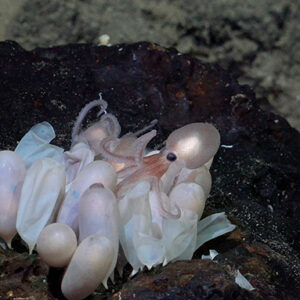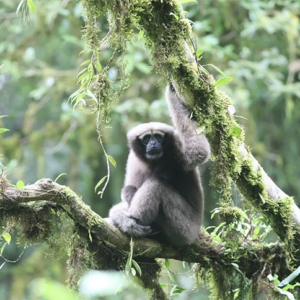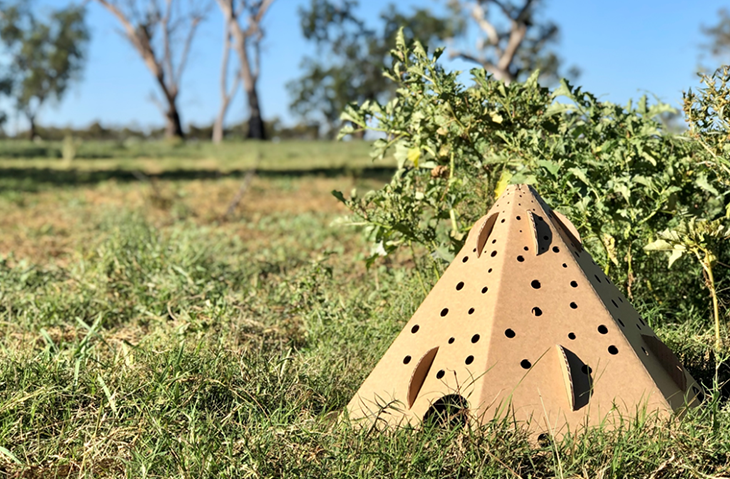
A scientist from Australia’s Macquarie University has created new habitat pods to help small animals survive in the wild after the wildfires devastated their homes. After hearing that more animals could possibly die from predator attacks, after managing to survive the massive wildfires, it was enough to push Dr. Alexandra Carthey to design these biodegradable wildlife shelters.
These pods were created to be safe houses for smaller animals, such as possums, bush rates, bandicoots, antechinus, and reptiles, all of whom are usually ground-dwellers and more susceptible to attack since they no longer have their places of hiding.
The pods, which are basically cardboard shelters, are six-sided pyramids that are 24-inches wide on all sides, as well as 24-inches tall, which is approximately 60 cm in size. Before they are put up, they are placed in easy-to-assemble flat packs to allow quick use.
Inside the pod there are three triangles that meet at an axis in the center. This is what creates the honeycomb space in the middle, which is a large enough space for bigger animals, while providing other small spaces for tinnier creatures such as invertebrates like native cockroaches, beetles and even lizards.
The pod has 150 holes all over the structure, which are also meant to allow light in to help the vegetation below to regenerate and hopefully, take over the pod eventually. This will also help the pod structures themselves biodegrade later on. They can also be anchored by sandbags, wooden stakes, or rocks using the “skirt” around the base, which is also made with cardboard.
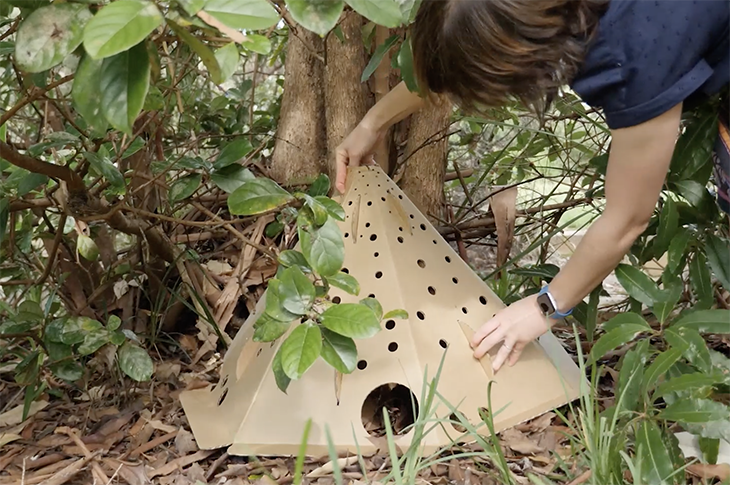
Long before, Dr. Carthey was already fascinated by the dynamics at play between wild predators and their prey. So when she noticed the exposed wildlife that were vulnerable to the hordes of prey after the 2019 Black Summer bushfires, she felt need to do something which is how she came up with the pods.
Animals Have Been Using the Habitat Pods
While most miniscule-sized creatures tend to die as prey, rather than die due to old age, Dr. Carthey explains, “A lot of their life is about trying not to get eaten.”
She continues, “They are hardwired to seek the safety of cover. And if you provide it, they will find it. After a bushfire, the thick grasses, leafy bushes, dropped bark, and leaf litter that small critters normally hide under have been burnt away. For the predator, it’s like suddenly spotting your prey across a mown grass lawn.”
Moreover, she explains how foxes and cats tend to kill more prey than they can actually eat, saying, “For 10 bandicoots killed, for example, they might eat only one.”
She also talks about the need for cover nothing new. She adds, “Chicken wire tunnels, sawn logs and piles of burnt logs have been used in the past. But most solutions involve dragging heavy things around, damaging fire grounds and preventing bush regeneration.”
“It’s not anticipated that the animals will seek cover and hide until the coast is clear. We suspect the animals will use the pods more as an escape hatch, that they will run in and out the other side and into another pod, using the network of cover to thwart the predator. The pods will be obstacles that block the predator’s line of vision and slows them down – giving the prey a better chance of getting away,” she shares.
In Collaboration With Other Groups
Since launching the flat-pack project, she is now in collaboration with the Australian Wildlife Conservancy and NSW National Parks and Wildlife Service.
One of the main benefits of the pods is that they are biodegradable, and the fact that they will only be there during the time they are needed, and no longer. During October last year, in the North Head Sanctuary located in Manly, a hazard reduction burn ended up destroying a staggering 62 acres of bushland. So this became the very first location for the pod sanctuary project field trial.
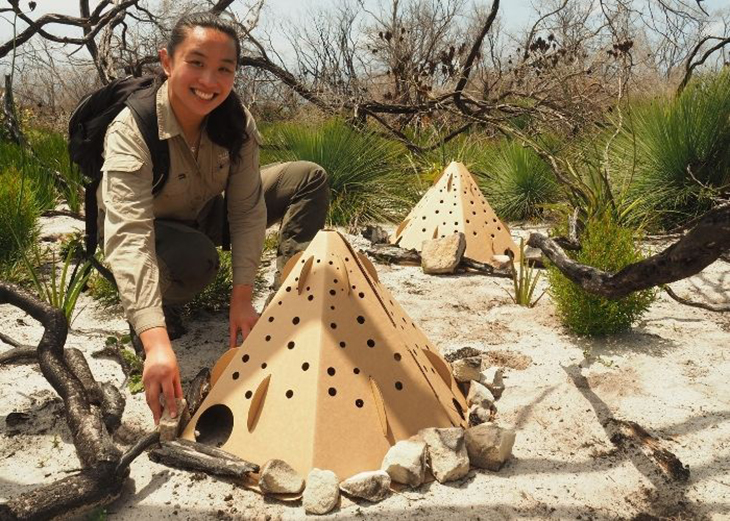
At the same time, the sanctuary is also the site of another mammal reintroduction program headed by the Australian Wildlife Conservancy. Incredibly, there were three small mammal species that were said to be locally extinct, but since 2017, have since been restored, and are now considered to be some of the animals that will best benefit from the pods.
They have deployed around 200 habitat pods in the area, while another 100 will be placed in yet another field trial, this time in Marramarra National Park. This project is being led by one of Dr. Carthey’s students, checking whether the pods are more effective in either recently burnt areas or in unburnt areas.
They have also placed remote sensing wildlife cameras around the areas, which are triggered by heat and motion, that will capture the movements of animals in the area. Meanwhile, surveys of the pods and the vegetation regrowth will be evaluated every month during the 12-month long project.
As a research fellow from the Department of Biological Sciences shared, “Pods like these have a huge potential to make a difference.”
What are your thoughts? Please comment below and share this news!
True Activist / Report a typo
